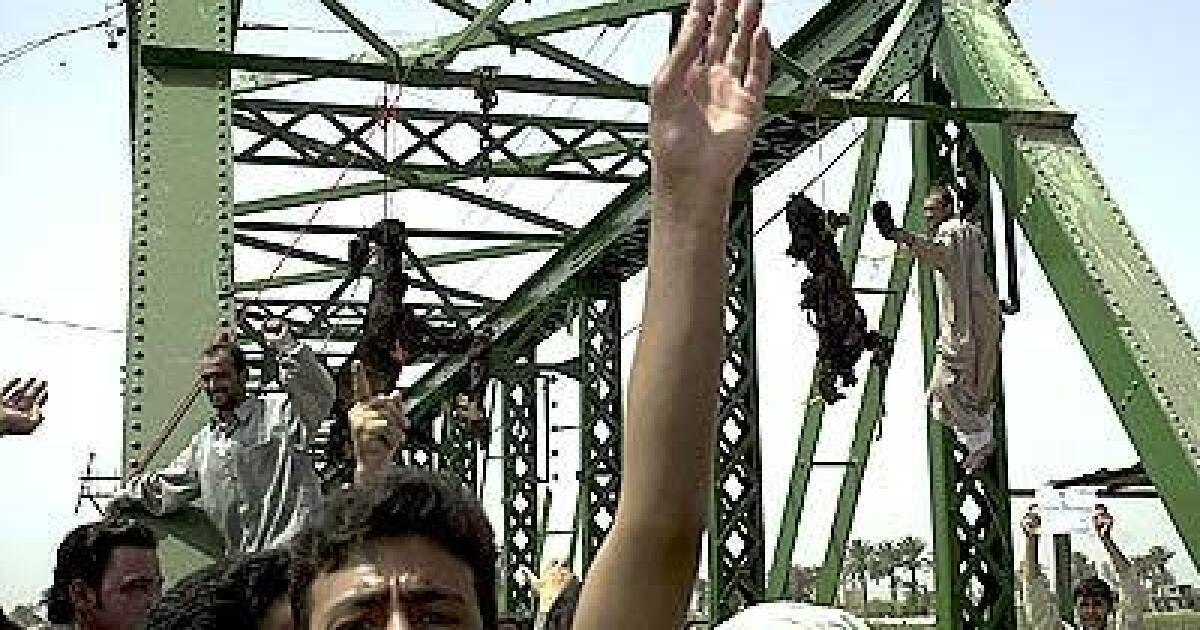How to Influence Friends and Exploit Enemies
The Three-Part Counterinsurgency Strategy of the United States Armed Forces in Fallujah
The strategic plan of the United States Armed Forces begins with the removal of the bodies of deceased American contractors in Fallujah, followed by non-violent shows of force within the region. It concludes with the creation of a Sunni-Shia coalition government and military force. This strategic plan will likely lead to an initial increase in violence within the region as “shows of force are associated with increased insurgent violence.”
The removal of the deceased contractors is a logical first step as it is both morally just and halts the use of the contractors’ bodies as tools of propaganda. The highly violent and public nature in which the contractors were killed demonstrates that both the local population and brewing insurgents hold grievances that can not be remedied quickly. I recommend reading ‘Why America Has Waged a Losing Battle on Fallujah’ for more insight into this phenomenon.

A more satisfactory remedy of an initial step of non-violent force on the part of the American forces, although seemingly counterintuitive, would most likely result in a decrease in total overall violence. This is because it will not only allow the United States Armed Forces to more easily differentiate between civilians with grievances and insurgents by identifying which groups or individuals respond with further violence, but it also prevents the United States from appearing as if it is committing indiscriminate violence within the region. This is important within the plan as “indiscriminate violence provides the greatest impetus for supporting insurgencies among uncommitted persons.”
Additionally, while the use of non-violence as a tool to end violent hostilities seems counterintuitive, using non-violent shows of force would lead to the creation of an atmosphere in which a strong coalition counterinsurgency could attempt to win over the locals. The bodies of American contractors being strung up for display to accompanying chants of victory in Sunni-dominated Fallujah is incendiary and a blatant example of the instability of the region. The initial American military plan to use shows of force on the ground, as opposed to an airstrike or matched guerilla warfare, will likely increase insurgent violence. The shows of force as a tool to instigate violence More easily distinguish between aggrieved civilians and actual insurgents. The video shows that both are accepting of violent acts against the United States, but only insurgents are perpetrating the violent actions.
The third aspect of the strategic plan involves establishing a better social structure and organization in Fallujah. Studies show that insurgent violence can intimidate civilian officials in charge of social and economic programs, and providing security against insurgent violence depends on good organization by an occupying force that can marshal and wisely use human and material resources.
Whether it is labeled a satisfactory justice for the murder and desecration of the bodies of American contractors while working in Fallujah or the opportunistic military strategy of a global superpower attempting to establish political stability in Iraq by suppressing fundamentalist religious sects trying to seize power through violence, the three-part strategic plan of the United States Armed Forces did accomplish it goals of ending conflict within the region. Moreover, the plan to convince counterinsurgency elements to participate in efforts to end the reign of violent acts committed against Americans as insurgency propaganda instead with the use of shows of non-violent force, a demonstration of honoring our fallen compatriots, and political and economic reorganization in Fallujah can be credited with finding an outcome that both ended the war more expeditiously as well as with minimal violence and, it is hoped, less lingering animosity towards the United States and its citizens whether abroad or at home.


